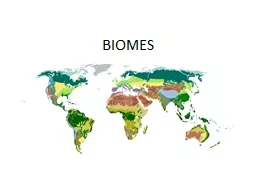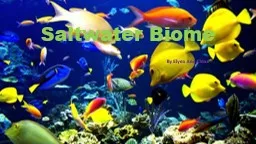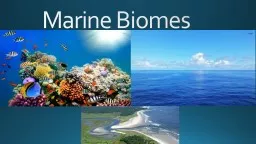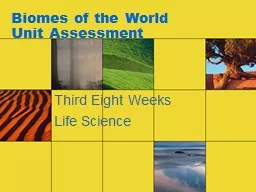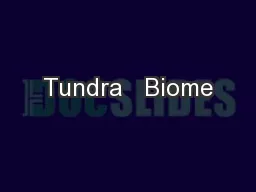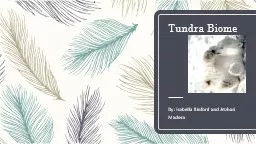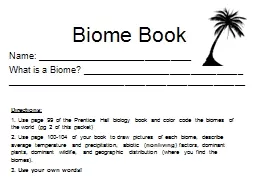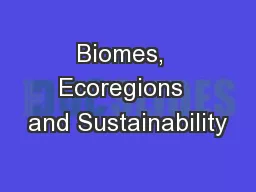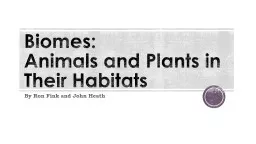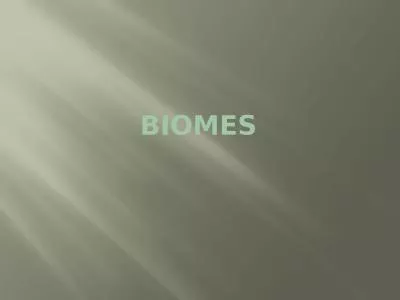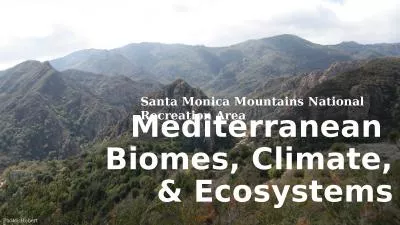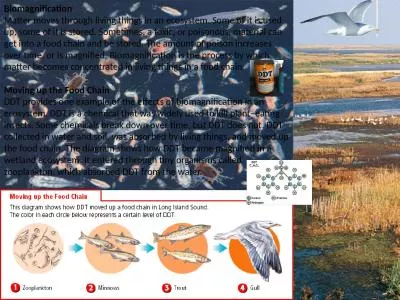PPT-BIOMES BIOMES Biome = a major biological community that occurs over a large area
Author : aaron | Published Date : 2018-11-18
A BIG group of LIVING things Different kinds of species Large geographical area REGION How are biomes commonly identified Biomes are commonly identified by the
Presentation Embed Code
Download Presentation
Download Presentation The PPT/PDF document "BIOMES BIOMES Biome = a major biologica..." is the property of its rightful owner. Permission is granted to download and print the materials on this website for personal, non-commercial use only, and to display it on your personal computer provided you do not modify the materials and that you retain all copyright notices contained in the materials. By downloading content from our website, you accept the terms of this agreement.
BIOMES BIOMES Biome = a major biological community that occurs over a large area: Transcript
Download Rules Of Document
"BIOMES BIOMES Biome = a major biological community that occurs over a large area"The content belongs to its owner. You may download and print it for personal use, without modification, and keep all copyright notices. By downloading, you agree to these terms.
Related Documents

